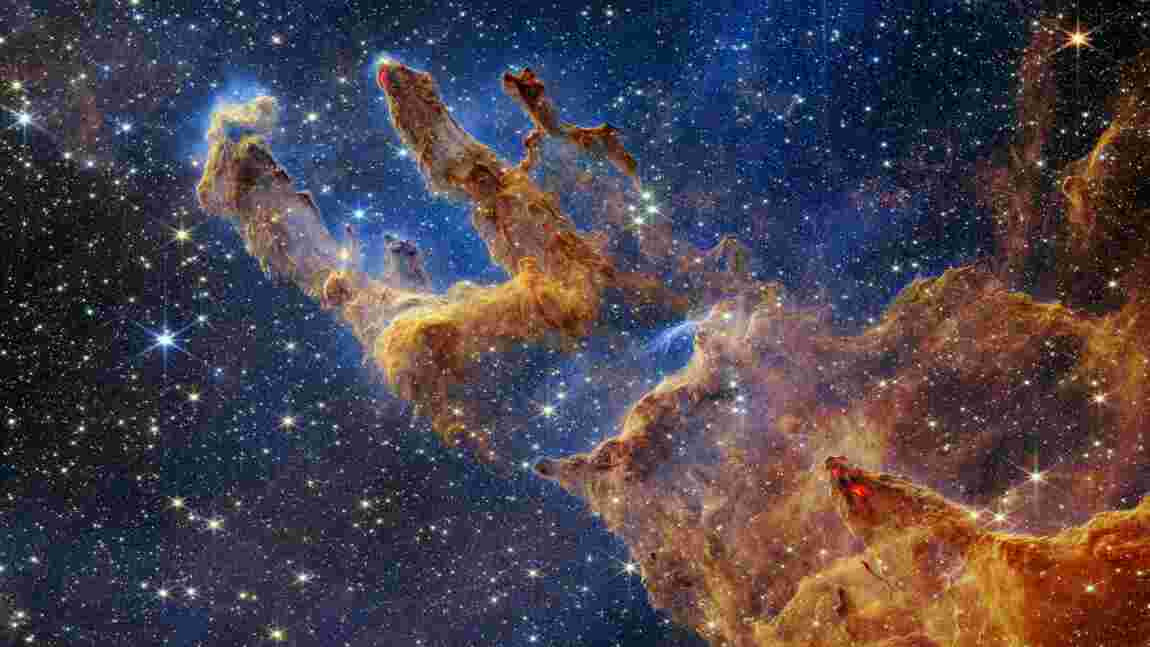The James Webb Telescope revealed Wednesday, October 19, its first shot of the iconic “Pillars of Creation,” immense gas structures and dust teeming with forming stars.
The magic of thousands of stars illuminates the entire image, in which these gigantic brown and orange columns stand in the immensity of the cosmos.
Traces of intense red light, at the end of several of the pillars, evoke lava. These are “ejections of stars still developing”, only a few hundred thousand years old, explained NASA in a statement. These “young stars periodically project supersonic jets that collide with clouds of matter, like these thick pillars.”
But thanks to its infrared capabilities, the James Webb Telescope, launched into space less than a year ago, can pierce the opacity of the pillars, revealing many new stars in formation – bright red balls.
“By popular demand, we owed it to ourselves to do the Pillars of Creation” with James Webb, tweeted Klaus Pontoppidan, science program manager at the Space Telescope Science Institute, which operates the telescope from Baltimore, on Wednesday, Oct. 19. “There are just so many stars!” “The universe is beautiful!” exclaimed NASA astrophysicist Amber Straughn as well.
The image, which covers an area of about eight light years, was taken by the NIRCam instrument, which operates in the near-infrared – a wavelength invisible to the human eye. The colors in the image were “translated” into visible light.
According to NASA, this new image “will help researchers revise their star formation models, identifying a much more accurate count of newly formed stars, as well as the amount of gas and dust in this region.” James Webb, whose first color images were unveiled in July, is conducting its observations 1.5 million miles from Earth.
One of the main goals of the $10 billion telescope is to study the life cycle of stars. Another main research focus is the study of exoplanets, i.e. planets outside the solar system.



Comment here